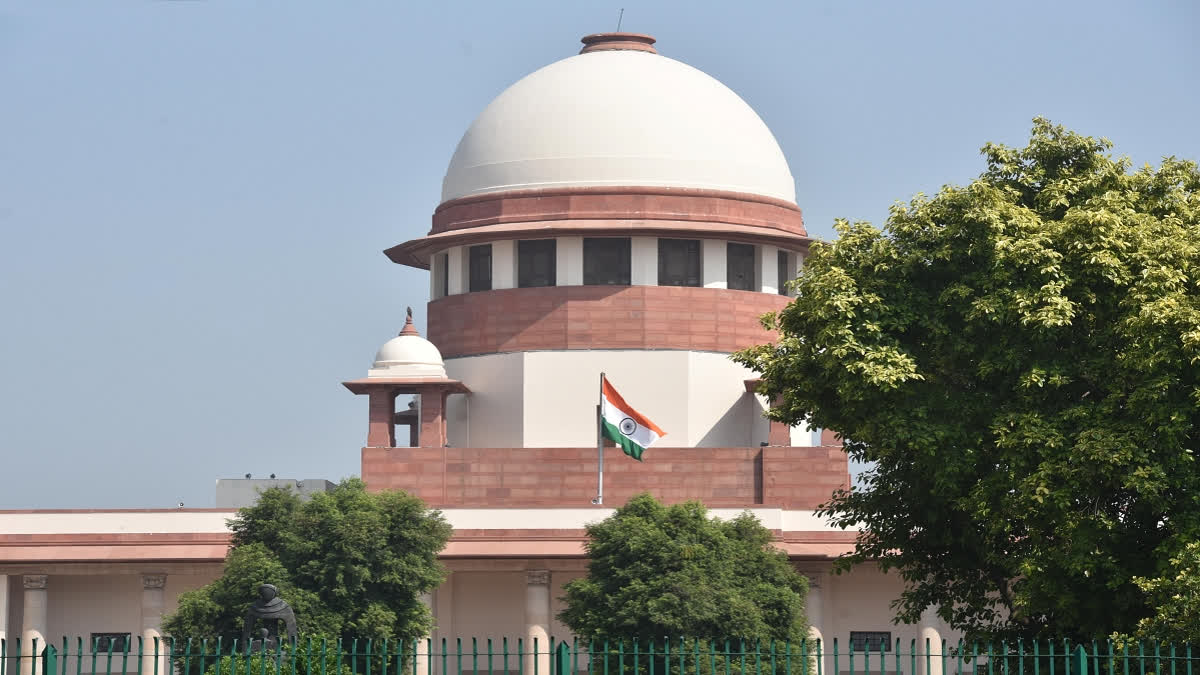Arguably, reservations in education and employment are one of the thorniest issues in India's non-discrimination and equality law. Lines of dissension deepened a little further when earlier this week, the Supreme Court of India pronounced its verdict in State of Punjab v. Davinder Singh ('Davinder Singh') validating sub-classification within the Scheduled Castes ("SCs") and Scheduled Tribes ("STs") for the purpose of reserving seats in educational institutions and public employment.
This ruling came via a Constitution Bench of the Supreme Court comprising seven judges – such benches of more than five judges are constituted when matters involve substantial questions concerning the interpretation of the Constitution. What were the constitutional concerns at stake in this particular case?
A. Unpacking the issue
The controversy in Davinder Singh, which was heard by the Supreme Court between 6-8 February 2024, arose in 1975, when the government of Punjab issued a notification dividing its existing 25% reservation for SCs (in education and employment) into two categories – while half of these seats reserved for SCs were to be offered to Balmikis and Mazhabi Sikhs, the rest were reserved for the remaining groups under the SC category.
This notification stayed put till 2004, until the decision of the Supreme Court in E.V. Chinnaiah v. State of Andhra Pradesh [(2005) 1 SCC 394/ 'E.V. Chinnaiah'], which held that the SCs and STs lists signify a homogenous group, and ruled against any further classification or grouping within the SC/ST list.
In the specific context of SCs, Article 341, clause (1) of the Constitution gives the President of India the power to notify which castes, races or tribes (or groups therein) shall be deemed to be SCs in relation to a State or Union territory. The bench of five judges in E.V. Chinnaiah held that any sub-classification within SCs by any State Government would tinker with the Presidential notification (or the “Presidential list”) under Article 341(1), which is constitutionally impermissible.
Given the Supreme Court’s decision in E.V. Chinnaiah, the 1975 notification was invalidated by the Punjab and Haryana High Court. To surpass these judicial decisions, the Punjab government enacted a law called the Punjab Scheduled Castes and Backward Classes (Reservation in Services) Act, 2006. A law meant to provide for reservation in services for the members of the SCs and Backward Classes, it stipulated under Section 4(5) that 50% of the vacancies of the quota reserved for the SCs in direct recruitment shall be offered to Balmikis and Mazhabi Sikhs, if available, as a first preference from amongst the SCs. This specific provision – Section 4(5) – was eventually held invalid by the Punjab and Haryana High Court in 2010.
This decision of the Punjab and Haryana High Court was eventually appealed before the Supreme Court. The case was referred to a five-judge Constitution Bench which, among other things, was to decide if the 2005 ruling in E. V. Chinnaiah had to be reconsidered. In 2020, hearings began, but because a Constitution bench cannot overrule a previous decision by a bench of the same strength, the matter was referred to a higher bench (E. V. Chinnaiah was also decided by a five-judge bench). The matter was listed for hearing by a seven-judge bench in 2023, which hearing finally transpired in February 2024.
B. The stakes involved
On 1 August 2024, by an overwhelming majority of 6:1, the Supreme Court permitted states to create sub-classifications within the SCs and STs for according greater protections to the most backward communities within these categories. Chief Justice of India (‘CJI’) D.Y. Chandrachud wrote a judgment for himself and Justice Manoj Mishra. Justices B.R. Gavai, Vikram Nath, Pankaj Mithal, and S.C. Sharma wrote separate but concurring opinions. Justice Bela M. Trivedi was the sole dissenter. How did these opinions fare on specific aspects of law and the Constitution?
All Scheduled Castes a homogenous unit?
A critical issue at stake in this case was whether all castes in the list of SCs are to be treated similarly. As mentioned above, Article 341(1) empowers the President to notify specific castes as SCs. Following such notification, the Constitution mandates that only Parliament can include or exclude any caste, race or tribe from the list of SCs. Through the Davinder Singh judgment, CJI Chandrachud rejected the argument that all castes in a certain SC list are to be treated similarly.
In paragraph 112 of the judgment, he categorically mentions that – first, the inclusion of certain castes within the SC category is only to demarcate them from other castes which are not included in the category, and second, such inclusion does not automatically lead to the formation of a uniform and internally homogenous class which cannot be further classified. In fact, the CJI relied on historical and empirical evidence to establish heterogeneity among SCs, to drive home the point that SCs are not a homogenous class unto themselves. At paragraph 140, he alludes to a study that revealed how certain Dalit castes practiced untouchability against other Dalit castes, and how in certain parts of the country lower sub-castes were denied entry into Dalit temples.
The CJI, in particular, remained cognizant of and brought attention to the internal differences among SCs. Drawing on similar such evidence, effectively, the Supreme Court rejected the finding in E. V. Chinnaiah of treating all SCs identically, without accounting for their relative backwardness.
Are the Presidential lists (of SCs and STs) set in stone?
Another critical concern in this case was about State Governments being able to make sub-classifications within the Presidential list of SCs (made under Article 341). To answer this question, it is essential to cast attention upon two key articles of the Constitution – Articles 15 and 16. While Article 15 deals with prohibition of discrimination on grounds of religion, race, caste, sex or place of birth, Article 16 concerns equality of opportunity in matters of public employment.
More specifically, Article 15, clause (4) gives states the power to make “any special provision” for the advancement of SCs and STs. Further, Article 16, clause (4) gives states the specific power to provide “reservations of appointments or posts in favour of any backward class of citizens which, in the opinion of the state, is not adequately represented in the services of the State”.
The majority in Davinder Singh utilised Articles 15 and 16 to pave the way for sub-classification among SCs. CJI Chandrachud categorically said that in exercise of its powers under Articles 15 and 16, the State is free to identify the different degrees of social backwardness and provide special provisions (such as reservation) to relatively more backward SCs.
In fact, CJI Chandrachud also used Articles 15 and 16 to address concerns about legislative competence of State Governments to sub-classify. He noted that the power to sub-classify SCs is traceable to Articles 15(4) and 16(4) for the purpose of educational institutions and appointments, overcoming concerns about legislative competence. It is worth noting that in her dissent, Justice Trivedi held that the Presidential list under Article 341 can only be altered by the Parliament, and any sub-classification by State Governments is impermissible.
In his concurring opinion, Justice Gavai acknowledged that Article 15(4) is an enabling provision, which leaves it to the discretion of an appropriate government to take suitable actions. He asserted emphatically that it is the duty of the State to give preferential treatment to the backward class of citizens who are not adequately represented.
Justice Gavai framed this as a question in paragraph 258 of his opinion – while discharging its duty under Article 15, if the State finds that certain categories within the SCs and STs are not adequately represented, and only the people belonging to few of the categories are enjoying the entire benefit reserved for SCs and STs, can the State be denied from giving more preferential treatment for such categories? In his view, the answer to this lay in the negative. He opined that the principle of equality under the Constitution mandates that the benefits of affirmative action should reach those who are genuinely in need, and sub-classification can be utilised to achieve substantive equality (which would be a step ahead of formal equality).
How are states to go about sub-classifying?
While greenlighting sub-classification, the majority opinion also expressed caution about how categories requiring protection had to be sub-classified. While carving out a sub-classification, states will need to demonstrate, backed by empirical evidence, a sub-group's need for wider protection. States will also have to demonstrate a reasonable rationale for classifying a sub-group. Needless to say, where a State Government decides to sub-classify, its decision can be reviewed by the courts. The aim would be to ensure that sub-classification is not done in furtherance of any political expediency.
Interestingly, while the issue of the application of creamy layer principle to SCs and STs was not in contention, four of the judges dealt with and commented on it. Justice Gavai noted that the Supreme Court has previously already extended the creamy layer principle to reservations in promotions for members of the Scheduled Castes and Scheduled Tribes in public services. He proposed introducing the creamy layer exception, which is already followed for Other Backward Classes (OBCs), for SCs and STs as well. Justices Vikram Nath, Pankaj Mithal, and Satish Chandra Sharma agreed with Justice Gavai.
C. What lies ahead...
In its judgment spanning over 560 pages, the Supreme Court made several pertinent observations about reservations and representation. While space precludes a mention of all such observations, one that merits attention is the CJI's reference to the need for "effective representation", and not representation from a purely numerical perspective. Article 16(4), he pointed out, is aimed at ensuring effective representation in the services of the State, across posts and grades. It is meant to ensure that socially backward groups not just gain employment, but also have a fair opportunity and prospect of being promoted to higher posts.
This observation signifies the need to implement affirmative action not just for the optics, but to bring about genuine representation to those who have been denied the same. Quite expectedly, the judgment has cooked up quite the storm. It remains to be seen how it is implemented by State Governments across the country. It is imperative that any or all sub-classification, if done, be based on robust data, and not be politically or emotionally motivated.
(Disclaimer: The opinions expressed in this article are those of the writer. The facts and opinions expressed here do not reflect the views of ETV Bharat)



